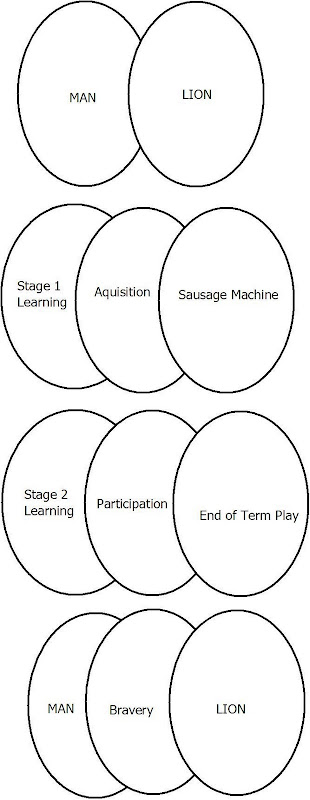I've ignored ideas in the past and regretted it.
I recall a lunch with a Cambridge Graduate who had created software that made texting possible. His company was looking at ways to expand its use on mobile phones. All I could think was that it was a retrograde step and would take us back to pagers; remember them? How wrong I was.
I recall also reading about someone who had kept a 'web-blog' (sic) and photo journal of their business year in 1998.
Even as a diarist and blogger I thought this somewhat obsessive. From research into the patterns and networks created 'LinkedIn' emerged.
So when a Microsoft programmer Gordon Bell decides to make a digital record of everything they do to see what patterns may emerge THIS time I take an interest. (New Scientist, Opinion. 23 December 2010 / January 2011
My immediate thought, not least because I lack the resources, is to be highly selective. Had I a team to take content, edit, transcribe, edit, collate and link, maybe I'd do more; I don't.
A professional swimming coach should assess and reflect on the sessions they deliver. I did this without fail for nearly three years, by which time a good deal of it was repetitive and I felt comfortable with the many different plans I was delivering to different groups. I've been videod, I use video to analyse strokes and skills and I use a digital recorder to jot down observations of swimmers. So what if I leave the digital recorder open for a session. Am I prepared to run through this hour for a start? If I do so what might I learn?
That this is a valid form of evidence of my abilities (and weaknesses)
That edited (no names revealed of swimmers) it, especially parts of it, become a training tool (best practice) or simply insights for others on how, in this instance, a one hour session is transmogrified for use with different levels/standards/age of swimmer.
I video lectures in 1983 on Sony Betamax. I did plays. Debates. All kinds of campus activity around Oxford. I learnt a good deal. The camera is not your mind's eye, this is why you edit and develop craft skills, not because you want to dramatise reality, but because the mind does it for you. We don't go round with fish-eyes taking everything in, we do jump between a wide, mid and close shot. And when we concentrate on something the proverbial naked woman could walk down the street and you wouldn't notice. A camera around one's neck cannot and will not establish or adjust to any of these view points.
The act of recording changes your behaviour, it is therefore a record of a false behaviour.
I filled some of the gaps. I set down some of my thoughts on how swimmers were performing whereas usually I'd make a 'mental note' or jot something down on paper.
Shortcuts will be uncovered, valuable algorithms will be written. Might, for example, the old corporate audit of how people spend their time be transformed if, putting it at arm's length, the function is monitored during a working day?
We've seen from the reality TV show 'Seven Days' shot in Notting Hill how tedious the lives of Jo blogs can be as entertainment. We're tired of Big Brother too. As Bell remarks, 'most of the moments he records are mind-numbingly dull, trite, predictable, tedious and prosaic.'
To deliver further the New Scientist advices that we take a look at:
DirectLife
Dream Patterns
Mood
Brainwaves
Use of email
Online interactions
Optionism
Moodscape
Track Your Happiness
Your Flowing Data
Mycrocosm
One-tricks
personalinformatics.org/tools
Why a handwritten diary my be better not only that digitising everything, but even a blog?
The way you write reflects your mood, captures tone, even levels of intoxication, passion or aggitation, as well as your age. Though I fear the work of the graphologist is redundant. A choice is made over the writing implement, and the book or pages in which it is expressed. You make choices. If you must, you can have bullet points of events. It doesn't take much of a tickle for the mind to remember an exact moment. Such moments digitised are two dimensional, with no perspective. A memory recalle matures, its meaning changes as does your interest in it. A memory loved and cherished is very different to one that you wish to forget. What happens when both haunt you in their digital form? And when such memories become everybody's property?
Where does copyright stand if you are digitising life?
We watch TV, we read books, we play video games, we read letters and bank statements, we have conversations that are meant to be private ...
Meanwhile, I've barely dealt with the fall out of this Opinion piece in the New Scientist and the next issue looking at neuroscience does my head.
Here Vilayanur S Ramachandran gets his head around the importance of metaphor in creativity and how it separates us from all other beings. I used to cheat
It took you out of your own mind and messed it up; sometimes useful, sometimes not. The way to be creative is to develop an inquiring, critical, educated, multi-outletting, messed up mind. Sing, dance, draw, paint, play musical instruments, climb trees, exercise in crazy ways, every week do or say something you've never done or said before. 'Quantable.' (sic) Radio 4. 6th Jan 2011. 20h30. The context was using the process of counting numbers to quanitfy some excess and the interviewee used this term 'quantable' which the producer of the programme must have liked because it was repeated. Amazing how we can mash-up the English Language and the new word may make perfect sense. Where ams I? ECA and a job interview. So what am I doing here? Habit. I want to come back to these ideas later and by doing this I know where it is.
